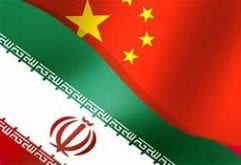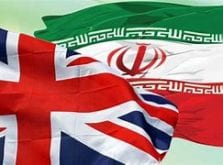Iranwire – The question of whether women should be allowed to stand as presidential candidates in the Islamic Republic of Iran has come up sporadically, and always controversially, ever since the mid-1990s. It has now resurfaced again in debates about the upcoming vote in June.
Women were granted suffrage in Iran in 1962, in a bill that also theoretically granted them the right to run for office. But under the Islamic Republic they have been relegated to representative roles in local councils and parliament, and cannot run for the top executive role.
Article 115 of the Iranian Constitution states that the president must be a “political man” as well as an adherent of Twelver Shia Islam. Neighboring countries including Pakistan, Afghanistan, Syria, Iraq and Turkey do not include any such sex-based restriction in their own constitutions.
The Iranian quarterly journal Women in Development and Politics recently published a study entitled Qualitative Analysis of the Argument Structure of Proponents and Opponents of Women’s Right to Represent in the Presidential Elections in Iran.
The article examined the roots of this discriminatory clause in the Constitution, while also weighing up the arguments in favor of and against women’s inclusion in the presidential race, taking in the known views of various legislators, candidates, jurists, women’s rights activists, and women with managerial experience between 1979 and 2019.
Among the proponents for women’s inclusion on the ballot that were cited in the study were the late MP and journalist Azam Taleghani, archivist Ashraf Boroujerdi, former MP Jamileh Kadivar, ex-president Akbar Hashemi Rafsanjani, reformist activist Faezeh Hashemi, and the current Vice President for Women and Family Affairs, Masoumeh Ebtekar.
Those in favour of excluding women from running for president included Guardian Council spokesman Abbas-Ali Kadkhodaei, revolutionary cleric Hossein Ali Montazeri, and academic Mohammad Javad Arasta.
The study examined 50 different argumentative texts, authored by 26 people, including 22 for women’s inclusion and four against. It found that proponents of female presidential candidates were almost five times more likely to rely on facts, statistics and scholarly sources in their arguments alongside logical and deductive reasoning – that is to say, by most objective measures their arguments were stronger.
The proponents also deferred to religious texts, international human rights legislation, civil rights in the Iranian Constitution, and the principles of Shiite jurisprudence to bolster their arguments. But the study found those against women’s inclusion only mentioned religious texts and jurisprudence.
Selective readings of religious scriptures have informed political discourse in Iran for many years, and have been used repeatedly to justify the same glass ceiling that prevents women from holding positions on the Guardian Council, the Assembly of Experts, the Supreme National Security Council, the Command of the Armed Forces, and high-ranking jurisprudential positions.
Recent surveys have shown that female participation at the ballot box is more or less equal to male. It comes even as women remain excluded from the elite and demands for greater inclusion in politics, a core element of Iranian women’s movements for more than a century, continue to be unmet. The proportion of female MPs in the last nine Iranian parliaments has never been higher than 5.2 percent, and shrivelled in the most recent terms.
 Shabtabnews In this dark night, I have lost my way – Arise from a corner, oh you the star of guidance.
Shabtabnews In this dark night, I have lost my way – Arise from a corner, oh you the star of guidance.


